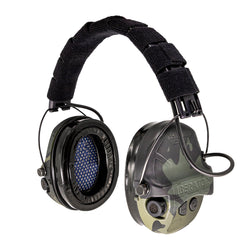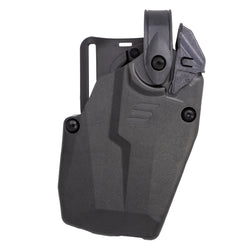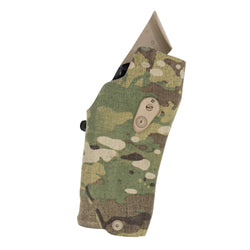The Navy SEAL (Sea, Air, and Land) Teams are synonymous with elite warfare, precision, and resilience. Their missions span the globe, from the jungles of Vietnam to the mountains of Afghanistan, and their reputation is etched in operations like the killing of Osama bin Laden and the rescue of Captain Richard Phillips.
But the SEALs weren’t born in a vacuum. Their lineage is forged in the crucible of World War II, where the need for specialized maritime warriors gave birth to the Underwater Demolition Teams (UDTs), Scouts and Raiders, the OSS Maritime Unit, and other pioneering forces that laid the foundation for modern Naval Special Warfare.
WWII: The First Sparks of Naval Special Warfare
Amphibious Scouts and Raiders (1942)
The earliest roots of the SEALs trace back to August 1942, when the U.S. Navy and Army jointly formed the Amphibious Scouts and Raiders. Their mission was to reconnoiter enemy beaches and guide assault forces under cover of darkness.
These men were trained in stealth, navigation, and amphibious tactics, and played a vital role in operations like TORCH, the Allied invasion of North Africa. Though not typically engaged in direct combat, their reconnaissance work was critical to amphibious success.

OSS Maritime Unit: The Secret Architects of Maritime Special Warfare
While the Underwater Demolition Teams and Scouts and Raiders are often credited as the direct predecessors of the Navy SEALs, another lesser-known but equally vital unit helped shape the DNA of modern Naval Special Warfare: the OSS Maritime Unit.
Formed in 1942 under the Office of Strategic Services (OSS), the precursor to the CIA, the Maritime Unit was tasked with conducting clandestine amphibious operations, including agent infiltration, sabotage, and support to resistance groups by sea. Many of its operatives were military personnel assigned to OSS roles, blending civilian innovation with military execution.

These operatives were pioneers in maritime espionage, developing cutting-edge gear like underwater breathing devices, waterproof watches, and even inflatable motorized surfboards.
Led by innovators like Dr. Christian Lambertsen, who invented the Lambertsen Amphibious Respiratory Unit (LARU), a precursor to modern rebreathers, the unit trained at secretive locations like Camp Pendleton and Catalina Island, mastering stealth diving and underwater demolitions.

Though many of their missions remained classified for decades, their legacy is undeniable. The Navy SEALs officially recognize the OSS Maritime Unit as one of their foundational predecessors.
Naval Combat Demolition Units (NCDU)
In 1943, the Navy created the Navy Combat Demolition (NCDUs) to clear beach obstacles ahead of amphibious landings. These demolition experts trained at Fort Pierce, Florida, and were instrumental in the D-Day landings at Normandy, where they faced intense enemy fire while clearing paths for Allied troops.

Underwater Demolition Teams (UDT)
A turning point came in November 1943 during the Battle of Tarawa, where hundreds of Marines died when landing craft struck submerged reefs. Admiral Richmond Kelly Turner responded by forming specialized beach reconnaissance teams. By December, the Navy had created the first UDTs, 14 officers and 70 enlisted men trained in demolitions, swimming, and hydrographic surveys.
Their first combat test came in Operation Flintlock in the Marshall Islands. The success of these missions led to the expansion of UDTs, which participated in every major amphibious landing in the Pacific Theater. These “frogmen” became legends, operating in swim trunks, fins, and masks, often under enemy fire, though their primary role remained reconnaissance and demolition rather than direct combat.

Korea and Cold War: Transformation and Expansion
The Korean War marked a shift in UDT operations. No longer limited to beach reconnaissance, they conducted raids, sabotage, and intelligence missions. UDTs infiltrated enemy harbors, destroyed supply lines, and even operated from submarines using rebreathers and advanced diving gear.

Between Korea and Vietnam, UDTs expanded their capabilities. They trained in parachuting, cold-weather survival, and advanced demolitions. The Cold War demanded versatile warriors who could operate in any environment, and the UDTs rose to the challenge.
Vietnam: The Birth of the SEALs
In 1962, President John F. Kennedy, a strong advocate for unconventional warfare, directed the creation of the Navy SEALs.
SEAL Team ONE was established on the West Coast, and SEAL Team TWO on the East Coast. These teams absorbed the legacy of the UDTs but added new dimensions: counterinsurgency, jungle warfare, and direct-action missions.

In Vietnam, SEALs earned their reputation as “men with green faces,” a nickname derived from their camouflage face paint. Operating in the Mekong Delta, they conducted reconnaissance, ambushes, and prisoner snatches. Their tactics were brutal, effective, and often classified. SEALs became the embodiment of guerrilla warfare, feared by the Viet Cong and respected by allies.

Post-Vietnam to Modern Day: Precision and Global Reach
After Vietnam, the SEALs continued to evolve. They participated in operations in Grenada, Panama, and Somalia. But it was the 1980 failed rescue of American hostages in Iran, Operation Eagle Claw, that highlighted the need for a unified special operations command. This led to the creation of U.S. Special Operations Command (USSOCOM) in 1987, with the SEALs as a key component.

SEAL Team SIX and THE BIRTH OF DEVGRU
In response to the failed Operation Eagle Claw during the Iran hostage crisis, SEAL Team SIX was formed in 1981 as a specialized counterterrorism unit within the U.S. Navy. Originally led by Commander Richard Marcinko, the team was tasked with executing high-risk missions that conventional forces couldn’t handle.
In 1987, SEAL Team SIX was officially disbanded and restructured as the Naval Special Warfare Development Group (DEVGRU). Though the name changed, the mission remained razor-sharp: classified operations ranging from hostage rescues to the elimination of high-value targets. Today, DEVGRU operates as a Tier One unit at the cutting edge of modern warfare, blending elite combat skills with innovation and secrecy.

Training: Forging Warriors
Becoming a SEAL is one of the most grueling processes in the military. Candidates undergo Basic Underwater Demolition/SEAL (BUD/S) training, a six-month crucible of physical and mental endurance. “Hell Week,” a five-day nonstop test of stamina, is infamous. Only about 25% of candidates make it through.

After BUD/S, SEALs attend SEAL Qualification Training (SQT), where they master weapons, tactics, and survival. The training never truly ends. SEALs constantly refine their skills in parachuting, diving, marksmanship, and language proficiency.

U.S. Navy SEAL Legacy and Ethos
The SEAL ethos is built on honor, courage, and commitment. Their motto, “The only easy day was yesterday,” reflects their relentless pursuit of excellence. SEALs are not just warriors; they are thinkers, leaders, and innovators.
Their legacy is written in blood and valor. From the beaches of Normandy to the deserts of Iraq, SEALs have stood at the forefront of America’s defense. They are forged in fire, tempered by adversity, and defined by their unwavering resolve.
Final Thoughts
The Navy SEALs are more than a military unit, they are a brotherhood. Their origins in WWII’s UDTs and OSS Maritime Unit reflect a tradition of courage and innovation. Over decades, they have adapted to new threats, technologies, and missions, but their core remains unchanged: to fight and win in any environment.
As warfare evolves, so too will the SEALs. But their legacy, born in the surf of Tarawa, hardened in the jungles of Vietnam, and sharpened in the mountains of Afghanistan, will endure. They are, and always will be, America’s elite warriors.
This article is part of our series honoring the U.S. Navy’s 250th birthday—see the other stories in the series for more history and insights.
Origins of the U.S. Navy
- 13 October 1775: The Birth of a Sea Power.
- John Paul Jones: Father of America’s Navy
- The History of the U.S. Navy’s First Six Frigates
- U.S. Naval Battles of the Revolutionary War
Navy Pioneers & Heroes
- History of U.S. Naval Infantry
- Forged in Fire: The Origins of the Navy SEALS
- Unsung Heroes of the U.S. Navy
Naval Hardware
Honoring the Legacy











